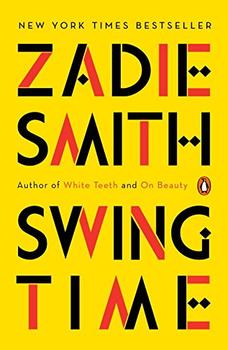Summary | Excerpt | Reviews | Beyond the Book | Read-Alikes | Genres & Themes | Author Bio

This article relates to Swing Time
Early in Zadie Smith's novel Swing Time, the narrator shows a friend a clip from the 1936 Fred Astaire musical by the same name. She doesn't have her glasses on the first time she watches it so is startled when she realizes that Astaire performs a solo dance referred to as the "Bojangles of Harlem" in blackface.
Music and dance had been a big part of the narrator's and her best friend Tracey's childhood: they met at dance lessons and liked jiving to music videos and watching Hollywood musicals. Various later scenes revolve around music: they work together on the set of a Guys and Dolls production; the narrator performs karaoke to a song from Gypsy on her thirtieth birthday; and, after a long estrangement, the narrator sees Tracey acting as part of the 'Negro chorus' of Showboat.
Although all these musicals could likely be questioned for how their class, race and gender issues relate to the world of the novel, it's the opening scene's shock at seeing blackface that lingers. It is thought that the use of dark makeup to make actors appear black, first became popular in performances of Othello and other Renaissance-era dramas in England. Blackface was used in traveling American minstrel shows from the 1830s onwards, a practice that carried over into the early years of cinema. White actors in blackface face off against the Ku Klux Klan in D.W. Griffith's The Birth of a Nation(1915) and Al Jolson appeared in blackface for The Jazz Singer (1927), the first movie to use sound extensively. These are particularly enduring images from the first few decades of the film industry.
Perhaps reflecting nostalgia for the old minstrel shows, blackface remained especially popular in movie musicals through the 1950s. Some of the many Hollywood actors who appeared in blackface are the Marx brothers, Bing Crosby, Doris Day, and Judy Garland. It wasn't until after the Civil Rights Movement of the 1960s that the use of blackface came to be widely viewed as inappropriate and offensive.
As for Fred Astaire's performance in Swing Time, rather than the old minstrel stereotype, he was actually imitating Bill Robinson, a famous African-American tap dancer. The dance – one of Astaire's most technically impressive, especially the section in which he dances with three of his shadows (achieved by trick photography) – might be seen as a tribute rather than mockery. In any case, it's certainly not a cut-and-dry situation; the same could be said of the complex relationships in Zadie Smith's novel.
Filed under Cultural Curiosities
![]() This "beyond the book article" relates to Swing Time. It originally ran in November 2016 and has been updated for the
September 2017 paperback edition.
Go to magazine.
This "beyond the book article" relates to Swing Time. It originally ran in November 2016 and has been updated for the
September 2017 paperback edition.
Go to magazine.
Analyzing humor is like dissecting a frog. Few people are interested and the frog dies of it.
Click Here to find out who said this, as well as discovering other famous literary quotes!
Your guide toexceptional books
BookBrowse seeks out and recommends the best in contemporary fiction and nonfiction—books that not only engage and entertain but also deepen our understanding of ourselves and the world around us.